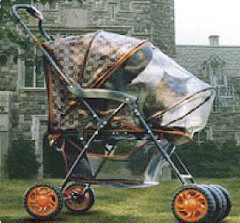Antifreeze is a Sweet But Deadly Poison for Pets
It only takes a few tablespoons of highly toxic antifreeze to seriously jeopardize an animal's life. Pet guardians need to know how to help keep antifreeze away from animals, as well as detect the early symptoms of antifreeze poisoning.
Poison prevention
To lower the risk to animals, consumers can switch to a brand of antifreeze containing propylene glycol, a chemical ingredient that is less toxic than ethylene glycol. In addition to being safer, propylene glycol has a bitter taste that makes it less attractive to curious animals. Although it's safer than ethylene glycol antifreeze, propylene glycol antifreeze is still toxic. To reduce the risk of poisoning, all brands of antifreeze should be handled carefully and treated as a highly poisonous substance. Ensure that antifreeze is stored well away from animals and children, antifreeze spills are completely cleaned up, and leaks are immediately repaired.
Families can help save their own pet from an encounter with antifreeze by closely watching the animal in areas where antifreeze may be accessible, such as roads, driveways, or garages.
What to do
1. Switch to a brand of antifreeze that contains propylene glycol instead of ethylene glycol.
2. Keep antifreeze sealed and away from animals; clean up spills completely, and fix any leaks immediately.
3. Don't allow your pet to wander unattended near driveways, roads, garages, or other places where she could come into contact with antifreeze.
4. Keep other products that contain ethylene glycol—like paint, cosmetics and novelty snow globes—out of the reach of animals, as well as any product of which you are not certain of the ingredients.
5. Monitor your pet for strange behavior. If you think she may have ingested antifreeze, take her to a veterinarian immediately.
How to detect poisoning
For pets exposed to antifreeze, the first few hours are critical. Animals who receive immediate veterinary care can recover successfully—but the longer they remain untreated, the less likely they are to survive.
Recognizing antifreeze poisoning symptoms is important—many pet guardians may not immediately realize that their pet has been exposed to the toxin until it's too late.
Antifreeze poisoning occurs in two phases. In the first phase, the animal typically appears lethargic, disorientated, uncoordinated and groggy. Symptoms usually appear 30 minutes to one hour after ingestion and can last for several hours.
The second phase, which can last up to three days, is characterized by symptoms such as vomiting, oral and gastric ulcers, kidney failure, coma and death.
Thousands of pets have suffered this preventable fate, prompting several states, and the federal government, to consider legislation that could drastically lower the incidence of antifreeze poisonings in both humans and animals.
Smart solutions
Six states—Oregon, California, New Mexico, Arizona, Tennessee, and Maine—have successfully passed legislation requiring that a bittering agent be added to ethylene glycol antifreeze to make it unpalatable for animals and children. While other states have considered similar laws, potential costs to the industry and other legislative priorities may have both played a role in pushing the issue to the back burner and preventing passage of the legislation.
Until a federal antifreeze bittering bill becomes law, it's up to concerned citizens and animal lovers to keep even the most curious critters out from under antifreeze's sweet—but deadly—spell.

.









.jpg)


No comments:
Post a Comment